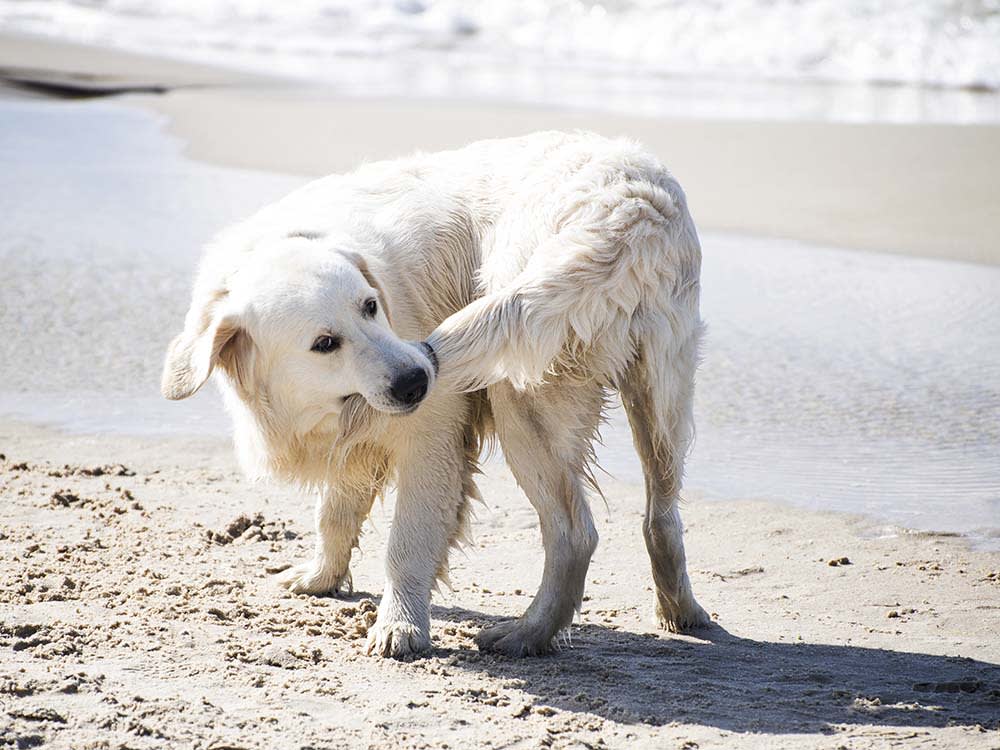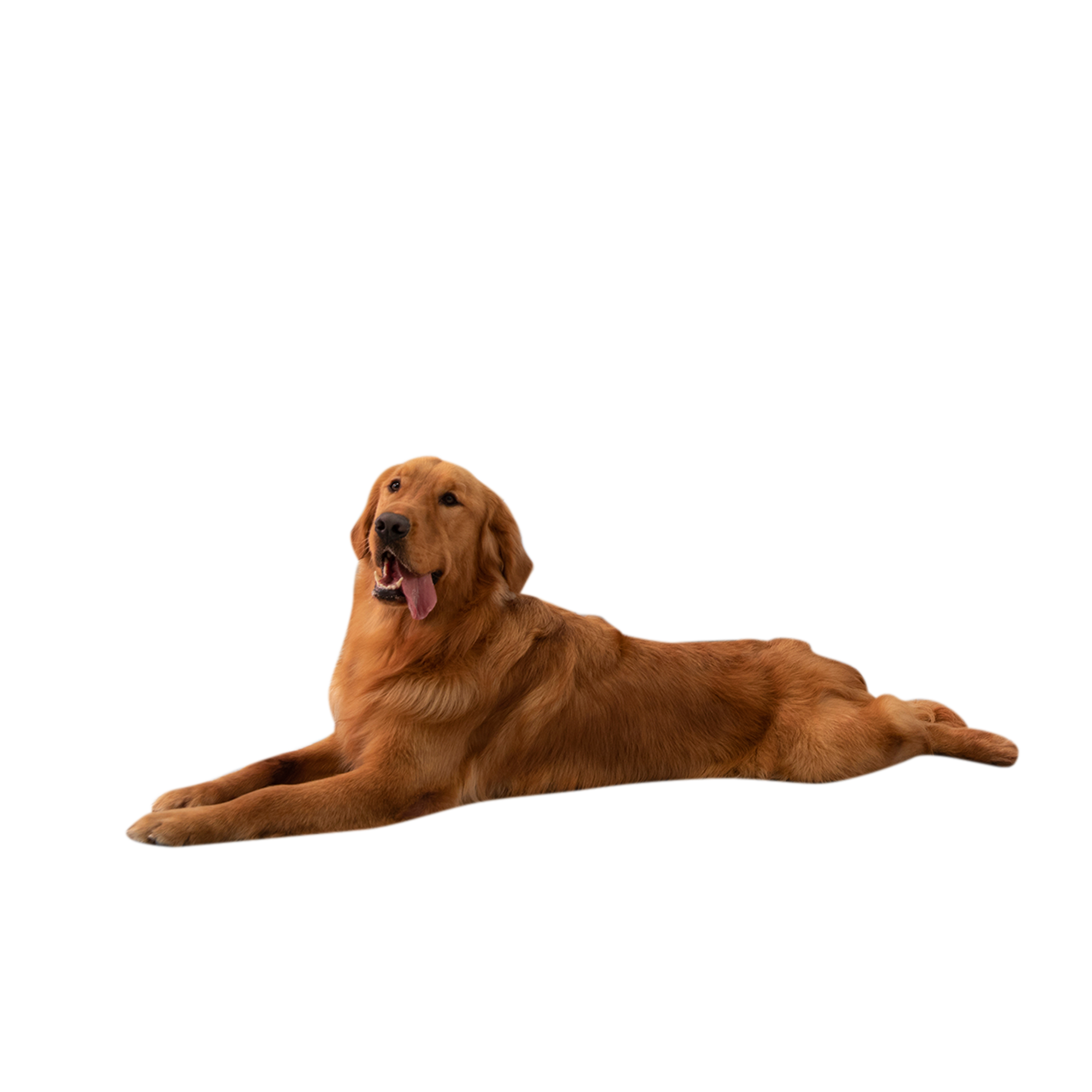A dog holding its tail to one side may indicate an injury or pain. It’s essential to observe the dog’s behavior and seek a veterinarian’s guidance if the behavior persists.
This could be a sign of discomfort, strain, or injury that requires attention. Understanding the reasons behind this behavior will help in addressing any potential health issues the dog may be experiencing. By being attentive and proactive, you can ensure your furry friend receives the necessary care and attention to maintain their well-being and happiness.
Being observant of your dog’s body language is crucial for identifying and addressing any potential health concerns promptly. Regular check-ups with a veterinarian will also help in monitoring your pet’s overall health and addressing any issues early on.
Decoding Tail Positions
When a dog is holding its tail to one side, it can convey different emotions. A tail held high and wagging indicates a happy and relaxed state of mind, while a tucked tail suggests anxiety or fear. It’s important to observe the position of the tail to understand your dog’s feelings.
A happy dog’s tail will be relaxed and possibly wagging, showing contentment. On the other hand, an anxious or fearful dog may tuck its tail between its legs as a sign of distress. By understanding these subtle cues, you can better interpret your dog’s emotions and respond accordingly to ensure their well-being.

Credit: www.thewildest.com
The Role Of Tail Wagging
Different Types of Wagging: Tail wagging is a common behavior in dogs, and it can have different meanings depending on the context. The most common type of wagging is the happy wag, where the tail is wagging side to side in a relaxed manner. This indicates that the dog is feeling content and friendly. On the other hand, a nervous wag is characterized by a slow and low tail wagging, often accompanied by a tense body posture. This might suggest that the dog is uncertain or anxious in its surroundings.
Meaning Behind Wagging Speed: The speed of a dog’s tail wag can also convey important information. A fast wag usually signifies excitement or happiness, while a slow wag may indicate caution or wariness. However, it is crucial to consider other body language signals and the overall context to interpret the meaning accurately. Dogs rely on a combination of vocalizations, facial expressions, and body postures to communicate their emotions effectively.
Tail Held High Vs. Tail Between Legs
Signs of Confidence:
- The dog holds its tail high
- The tail is wagging vigorously
- Ears are perked up
- Direct eye contact
- Relaxed body posture
Indications of Fear or Submission:
- The dog tucks its tail between its legs
- Lowered body posture
- Ears pinned back
- Avoids eye contact
- Trembling or cowering

Credit: m.youtube.com
The Curled Tail Mystery
Dog Holding Tail to One Side: If you notice your dog holding its tail to one side, it could indicate a variety of emotions or physical conditions. The Curled Tail Mystery: Understanding why dogs hold their tails to one side can provide insights into their well-being and state of mind.
Understanding Tail Curling: Dogs communicate through their tails, and a curled tail might indicate excitement, anxiety, or pain. Possible Psychological Significance: Paying attention to your dog’s tail position can help you better understand their emotions and address any potential issues.
Tail To One Side Behavior
Dogs may hold their tail to one side due to physical discomfort or medical issues. Possible causes include injury, pain, or muscle tension. Canine communication may be impacted as this behavior can signal distress or discomfort to other dogs.
Observing your dog’s tail position is important for understanding their well-being. If the behavior persists, a visit to the veterinarian is recommended to rule out any underlying health concerns.
Tail Tucking And Tail Between Legs
Dogs holding their tail to one side may indicate discomfort or insecurity. Tail position can reveal an emotional state. Tail tucking or having the tail between legs is a common behavior.
When a dog tucks its tail, it may be expressing fear or submission. This can be a way for them to protect themselves when feeling threatened.
It’s crucial to understand the subtle cues dogs give through their body language. Paying attention to their tail position can help interpret their emotions.
Psychological factors play a significant role in behaviors like tail tucking. Dogs may react differently based on their past experiences and current environment.
Tail As An Indicator Of Health
A dog holding its tail to one side can indicate potential health issues or discomfort. This behavior may signal pain or injury in the tail region, prompting the need for a veterinary examination. Monitoring changes in tail position can provide valuable insights into a dog’s overall well-being.
Dog Holding Tail to One Side
Tail as an Indicator of Health
Physical Health Clues from Tail Position
Dogs use their tails as a communication tool, and its position can reveal much about their well-being. A tail held high typically indicates confidence and alertness, while a tucked tail may signify fear or anxiety. Furthermore, a dog holding its tail to one side could be experiencing discomfort or pain in the corresponding area. It’s essential to observe your dog’s tail position to decipher any potential physical discomfort.
In addition to physical health clues, a dog’s emotional state can also be reflected in its tail behavior. A wagging tail can express joy and excitement, while a low, slow wag might convey insecurity or uneasiness. Being attentive to your dog’s tail language can provide valuable insights into their overall health and happiness.
Responding To Tail Cues
Effective ways to interact with dogs based on tail signs can be crucial in avoiding misinterpretations of tail language. When a dog holds its tail to one side, it sends a signal that should be understood correctly. It’s important to remember that not all tail positions mean the same thing in every dog. Each dog has its unique way of conveying its emotions and intentions through its tail.
Observing the context and the overall body language can help decipher tail cues accurately. Approaching a dog cautiously and allowing them to approach you first can help build trust and avoid any miscommunication. Offering a closed hand for the dog to sniff or allowing them to initiate physical contact can also facilitate positive interactions.
By respecting a dog’s body language and being mindful of how we respond to their tail cues, we can build a strong bond and understanding with our furry friends.

Credit: pethelpful.com
Frequently Asked Questions
Why Is My Dog Tail Bending To One Side?
A dog’s tail bending to one side may indicate injury, infection, or neurological issues requiring vet attention.
Why Is My Dog Holding His Tail Differently?
Your dog may be holding his tail differently due to injury, pain, fear, or discomfort. Observe his behavior for clues.
What Does It Mean When Dog Tail Goes Side To Side?
A dog wagging its tail side to side typically means it’s happy and friendly. It’s a sign of excitement and a way for them to communicate joy and eagerness to interact. If the tail is tucked between the legs, it may indicate fear or anxiety.
How Do You Treat A Sprained Dog’s Tail?
To treat a sprained dog’s tail, limit their physical activity and provide a calm environment. Apply cold compresses and anti-inflammatory ointments. If the pain persists, consult a veterinarian for further evaluation and treatment.
Conclusion
It’s crucial to pay attention to your dog’s tail movements. If you notice them consistently holding their tail to one side, it could be a sign of pain or discomfort. It’s essential to consult a veterinarian for a thorough examination and proper diagnosis to ensure your pup’s well-being.
Understanding your dog’s body language can strengthen your bond and promote their overall health and happiness.

Hello, I’m Daniel Johnson. I Studied animal science at the University of Florida. I am a seasoned veterinarian deeply committed to ensuring the health and happiness of every dog. With extensive expertise in dog health, I contribute my knowledge to Dog Advisor Pro to help dog owners understand and address their pet’s health concerns. My passion is making veterinary advice accessible and understandable to all, allowing dog owners to provide the best care for their furry friends.


